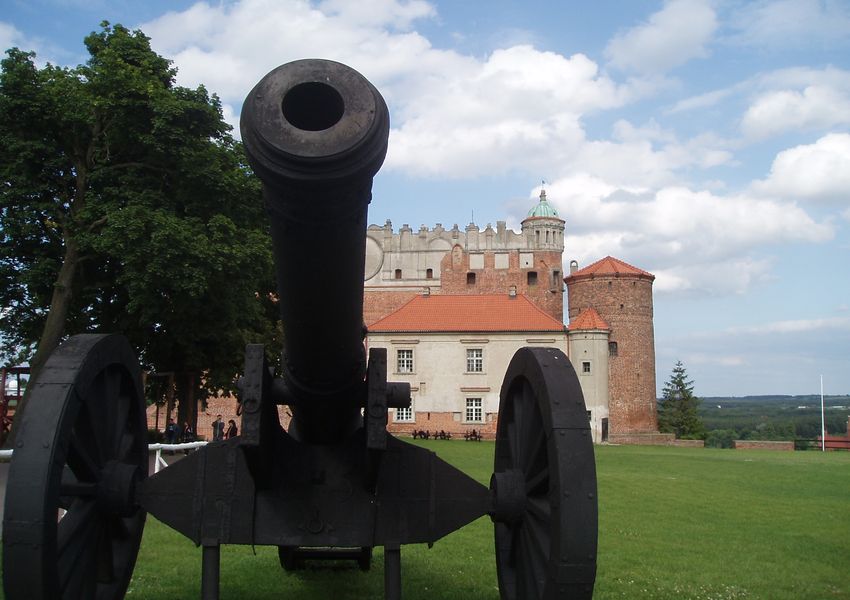The Castle Golub-Dobrzyń
The Castle Golub-Dobrzyń
its foundations host original Gothic bricks laid by the Teutonic Knights in the 14th century, when the castle served as a fortress and a monastery.

The Castle of the Teutonic Knights, situated on the hill and well visible from the far makes a big impression on tourists when they see it for the first time.
Its foundations host original Gothic bricks laid by the Teutonic Knights in the 14th century, when the castle served as a fortress and a monastery. In the 16th century, the castle was taken over by the Polish king Sigmundus III and given to a Swedish princess Anna Vasa, who cleverly changed this typically defensive structure into an elegant Renaissance residence.
The village Golub populated by Poles, was first mentioned in a document from 1258; Chełmno Land, or Culmerland, had been in the hands of the Teutonic Knights since 1231.
The Teutonic Knights built a castle (1296-1306) and elevated it to town status. In 1421 all privileges of the town were confirmed by Grand Master Michael Küchmeister von Sternberg. Golub was severely damaged during wars in 1414 and 1422; the latter war called the Gollub War. The town became part of Poland according to the Second Peace of Thorn (1466).
The height of prosperity of Golub was reached during the rule of King Sigismund III Vasa 1611-25. The town was severely damaged during Polish-Swedish Wars, especially in 1626-29, 1655, and 1660, as well as the later Seven Years' War (1756-63).
In the First Partition of Poland in 1772, Golub was annexed by the Kingdom of Prussia. From 1807-15 it belonged to the Duchy of Warsaw. It was assigned to the Duchy of Poznan in 1815, and in 1817 it was included in West Prussia. In 1871 it was included in Imperial Germany and was subject to Germanisation.



























































